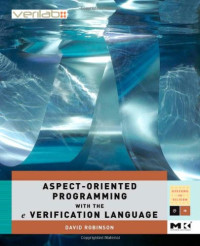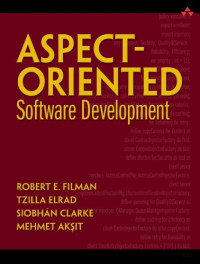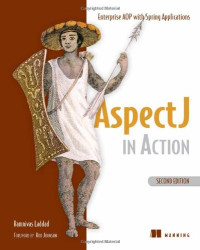
Aspect-Oriented Programming with the e Verification Language: A Pragmatic Guide for Testbench Developers (Systems on Silicon)
David Robinson
What's this AOP thing anyway, really-when you get right down to it-and can someone please explain what an aspect actually is?Aspect-Oriented Programming with the e Verification Language takes a pragmatic, example based, and fun approach to unraveling the mysteries of AOP. In this book, you'll learn how to:. Use AOP to organize your code in a way that makes it easy to deal with the things you really care about in your verification environments. Forget about organizing by classes, and start organizing by functionality, layers, components, protocols, functional coverage, checking, or anything that you decide is important to you. Easily create flexible code that eases your development burden, and gives your users the power to quickly do what they need to do with your code. Truly create a plug-and-play environment that allows you to add and remove functionality without modifying your code. Examples include how to use AOP to create pluggable debug modules, and a pluggable module that lets you check that your testbench is still working before you begin a regression. Utilize AOP to sidestep those productivity roadblocks that seem to plague all projects at the most inconvenient of times. Discover why "return" is evil, and some other "gotchas" with the AOP features of eAll of the methodologies, tips, and techniques described in this book have been developed and tested on real projects, with real people, real schedules and all of the associated problems that come with these. Only the ones that worked, and worked well, have made it in, so by following the advice given in this book, you'll gain access to the true power of AOP while neatly avoiding the effort of working it all out yourself. . Use AOP to organize your code in a way that makes it easy to deal with the things you really care about in your verification environments. Forget about organizing by classes, and start organizing by functionality, layers, components, protocols, functional coverage, checking, or anything that you decide is important to you. Easily create flexible code that eases your development burden, and gives your users the power to quickly do what they need to do with your code. Truly create a plug-and-play environment that allows you to add and remove functionality without modifying your code. Examples include how to use AOP to create pluggable debug modules, and a pluggable module that lets you check that your testbench is still working before you begin a regression. Utilize AOP to sidestep those productivity roadblocks that seem to plague all projects at the most inconvenient of times. Discover why "return" is evil, and some other "gotchas" with the AOP features of e
카테고리:
년:
2007
출판사:
Morgan Kaufmann
언어:
english
페이지:
264
ISBN 10:
0123742102
ISBN 13:
9780123742100
파일:
PDF, 1.69 MB
IPFS:
,
english, 2007
 Amazon
Amazon  Barnes & Noble
Barnes & Noble  Bookshop.org
Bookshop.org  파일을 변환하실 수 있습니다
파일을 변환하실 수 있습니다  더 많은 검색 결과
더 많은 검색 결과 기타 혜택
기타 혜택 

































